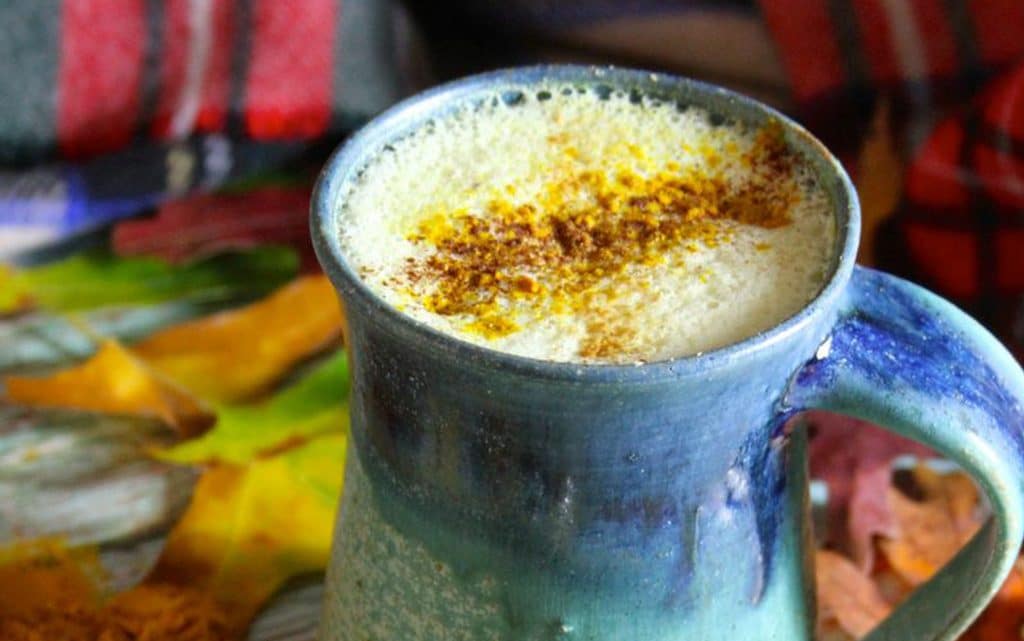Perhaps the oldest healing science in the world, Ayurveda is a vast and detailed holistic system designed to help people live a balanced, healthy life. This ancient Indian science was developed thousands of years ago as a powerful medical system, built around a sophisticated knowledge of our mind-body connection. It focuses on optimum physical health, as well as mental and emotional wellbeing. Modern medicine eventually caught up, proving the mind-body theory, and Ayurveda has spread throughout the western world in recent decades.
The 5,000-year-old healing science is more than just a system for treating illness. It is considered the science of life (ayur, meaning life and veda, meaning knowledge, in Sanskrit terms). It allows people to become their healthiest selves, both in the body and the mind, with the intention of avoiding illnesses, rather than treating them if they develop later on, due to lifestyle choices. However, Ayurvedic medicine also includes remedies for diseases and ailments.
Ayurveda encourages optimum health of the body and mind, as well as an understanding of what different people and body types need to lead a healthy, vibrant life…
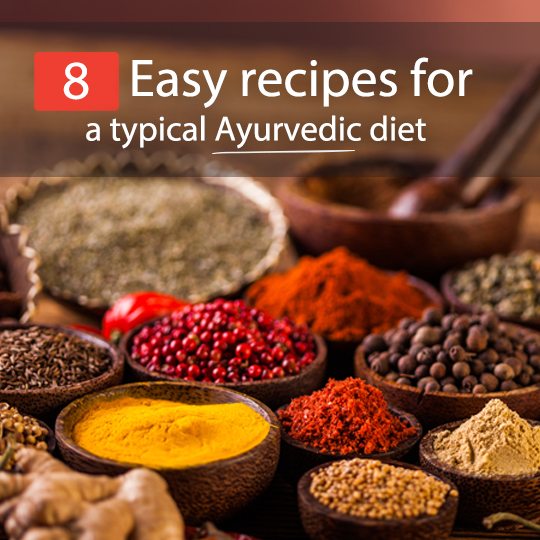
The 3 Doshas & Eating For Your Body Type
If you’ve ever wondered with envy why some of your friends seem to be able to eat as much as they want without ever putting on weight, or why your partner doesn’t stress out about the everyday things that you do, the three doshas in Ayurvedic science might go some way to answering that for you. The system explains that there are biological energies found within the human body and mind that fall generally into three categories: Vata, Pitta and Kapha, which are like blueprints for people’s natural characteristics, body types and states of mind. Often people can be made up of all three doshas, or have one or two dominant ones, but they constantly change in response to the food you eat, the seasons, your actions and emotions. According to Ayurvedic science, an imbalance in people’s energies caused by stress, unhealthy diets, weather and strained relationships can increase their risk of becoming more susceptible to different diseases.
Eating food that compliments your dominant dosha can help keep you balanced and in shape. But there are a few other guidelines on eating that ensure your Ayurvedic diet has the greatest and most positive impact it possibly can. Firstly, eat only when you are hungry, not because the clock says it’s time to eat. Part of Ayurveda is realizing your mind-body connection, which means listening to your body and what it needs. Secondly, opt for room temperature or warm water rather than iced water during meals, and sip it rather than gulping it down. And finally, when you eat, sit down, turn off the television, put down your book, magazine, phone or tablet, and concentrate on your meal. Chew slowly and enjoy your food – that way you will know when you’re full. It sounds strange, but if you are distracted by the things around you and don’t concentrate on eating, you don’t actually realize when you’ve had enough, and that often leads to over-eating.
-
Vata
Vata energy reflects the natural elements of space and air, linked to movement, breathing and circulation. Predominant vata characteristics include a slender build and vata people are generally fast moving, creative, excitable and impulsive, prone to cold hands and feet, anxiety, and in some cases, digestive problems. When out of balance, people with vata characteristics can often suffer from joint pain, constipation and dry skin.
-
Pitta
Comprised of fire and water, people with pitta characteristics often have a medium physique and easily build muscles, with general strength, good concentration, focus and a competitive nature. They are generally romantic, opinionated, don’t deal well with heat, and can have a tendency to become angry or agitated rather than stressed or worried in difficult situations. When pitta energy is out of balance, people can be susceptible to ulcers, inflammation, digestive issues, heartburn and arthritis.
-
Kapha
Kapha elements include earth and water, and characteristics can include affection, compassion, and an easy going, peaceful nature. They are generally forgiving, slow moving and resilient to illnesses, but can be prone to depression, diabetes and obesity.
Ayurvedic doctors can discuss your dosha or doshas with you, but there are also questionnaires that can help you figure out what your dominant dosha is, if you answer them 100% truthfully.

The 6 Tastes Of Ayurveda
An Ayurvedic diet consists of six essential tastes – sweet, sour, salty, pungent, bitter and astringent, and each one is essential to a healthy, balanced diet. Modern diets get plenty of sweet and salty (too much in most cases) but often completely ignore the other four. A typical Ayurvedic diet consists of the following sources for these six tastes.
- Sweet – for example, sugar, honey, milk and rice.
- Sour – such as lemons, hard cheese, yogurt and vinegar.
- Salty – usually Himalayan or course sea salt.
- Pungent – including chili, cayenne pepper and ginger.
- Bitter – for example, leafy greens and turmeric.
- Astringent – such as pomegranate, beans and lentils.
When you include each of these tastes into your daily diet, you generally feel more satisfied than if you have, say, a salty meal, which can often lead to a sweet craving afterwards.
An important part of Ayurveda and eating for your body type is understanding Agni, which translates to ‘fire’. It is the digestive and metabolic functions of the body. Balancing your agni through your diet is basically the key to good health and longevity in Ayurvedic science, and practitioners believe that most diseases, ailments and illnesses can be traced back to an unbalanced, weakened agni. To understand and take care of your ‘digestive fire’, you first need to know which of the three doshas applies to you and eat according to that, as well listening to what your body is asking for.
TIP: By eating something bitter or astringent at the end of a meal, you can reduce the likelihood of a sweet craving, which is a great way to slowly weed out any dessert habits you may have!
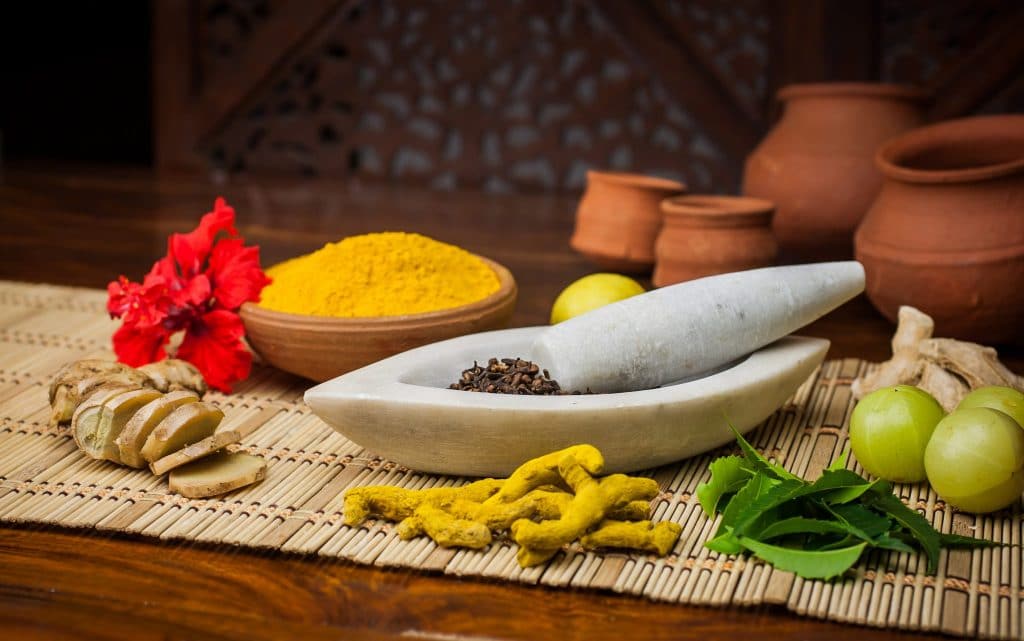
Guide To Ayurvedic Herbs And Spices
Most people associate Indian spices as Ayurvedic food, and they would be right – spices provide the six essential tastes and are a fundamental and central part of any Ayurvedic diet. Herbs and spices add aromas, tastes and healing properties to any meal, and if you are switching to an Ayurvedic diet, or taking inspiration from the ancient healing science, it’s important to have an understanding of these ingredients’ benefits and how they work together.
- Turmeric – soothes an upset stomach, eases the symptoms of arthritis, improves heart health, encourages weight loss and can help treat depression. It also adds a stunning bright yellow color to any dish!
- Curcumin – this is the active component of turmeric, which has an anti-inflammatory quality. It has promising benefits in the prevention of Alzheimer’s and some cancers, as well as improving skin health.
- Cinnamon – improves blood glucose, metabolism, cognitive function, memory and triglycerides, and reduces bad cholesterol. Because of its regulatory effect on blood sugar, it can be extremely beneficial to people with Type 2 diabetes.
- Cardamom – thought to have aphrodisiac qualities in Ancient Greece, Rome and Egypt, but also has a number of health benefits, including cleansing the sinuses, stimulating the mind and encouraging clarity. It helps indigestion, upset stomach and heartburn and can also minimize the mucus-forming properties in milk and detoxify caffeine when added to coffee.
- Cumin – a strong, astringent herb that is full of nutrients and essential minerals, including thiamine and phosphorus. It keeps the digestive system healthy and helps flush out toxins. It is often used to treat bloating, flatulence and a sore gut.
- Black pepper – stimulates digestion, strengthens the immune system and encourages heart and kidney function. It comes from a smooth woody vine called the pepper plant, and when used together with olive oil, it can nourish the brain.
- Cayenne pepper – a beautiful earth red spice that adds a kick to any dish. It has a cleansing effect on the body and can aid in calming digestion, despite its spicy taste.
- Cloves – as well as being a popular Christmas spice in the west, cloves are an age-old Ayurvedic spice that helps digestion and metabolism. It also has anti-inflammatory benefits.
- Saffron – a beautiful aromatic spice that strengthens the entire body, with a powerful effect on the reproductive organs. It can help ease menopause, menstrual discomfort and mood swings.
- Coriander – stimulates the release of insulin, lowers blood sugar and can lower bad cholesterol. It can also be used to treat inflammation of the skin, diarrhea, mouth ulcers and anemia.
- Nutmeg – calms the mind and helps with insomnia and stress, especially when added to warm milk in the evening. It is also known to help relieve pain, soothe indigestion, detoxify the body and boost the skin for a healthy glow.
- Ginger – a fragrant root that can improve poor circulation and digestion. It can also be a powerful remedy for colds, flus and nausea. Its powerful antioxidants and anti-inflammatory properties can help alleviate pain from headaches and arthritis.
- Fenugreek – fat burning seeds that can lower blood glucose, help dissolve fat within the liver, improve bone health and increase metabolism.
- Fennel – a cooling spice that helps clean out the digestive organs. It helps with constipation and also has calming properties.
- Basil – a cleansing, purifying herb that can help the immune system, soothe a cough, clear the skin and reduce stress.
- Cilantro – also known as Vietnamese parsley, this detoxifying herb can remove mercury and lead from the system when used fresh.
- Curry leaves – as well as being delicious, curry leaves can improve stomach and small intestine functionality. They may also reduce bad cholesterol and nourish hair roots.
Once you have these vital Ayurvedic ingredients, it is important to store and prepare them correctly so that you receive their maximum benefits. It is much better to buy your spices as whole seeds, roots or leaves, rather than already ground, because they lose a lot of their valuable active aromatic compounds as time passes. You can grind your spices right before cooking, either in an electric coffee grinder or a mortar and pestle.
It is also important to use heat to get the most out of your spices, which is why they usually go in the pan first. Either sauté them in a little olive oil or coconut oil, or dry fry them in a pan before adding the remaining ingredients.
Alongside some great lunch and dinner recipes, you can store and use these incredibly powerful spices in tea, water, dessert recipes and breakfast porridge. Cinnamon and cayenne pepper, for example, are great additions to any healthy dessert, like homemade dark chocolate. And nutmeg, cinnamon, fennel and cardamom can add a scrumptious, spicy twist to porridge in the morning.
1. Ginger, Turmeric & Carrot Soup – This tasty, creamy soup is full of goodness and the mixture of carrots, turmeric and ginger is always a winner. With only a handful of ingredients and one pot needed to create this healthy dish, it’s a great option to warm up your body and wake up your senses. The recipe’s nutritious ingredients give the immune system a nice kick into gear, which can help you avoid seasonal cold and flu viruses. Ginger, in particular, has been used in ancient medicine to treat digestive problems, joint pains, inflammation and allergies, and turmeric will give your skin a nice healthy, glowing boost. It also has four of the six tastes, which is a great amount for a lunch or dinner meal, or as a side dish. The sweet comes from the carrot and sweet potato, bitter from the celery and turmeric, salty from the garnish, and pungent from the ginger, cloves and pepper.
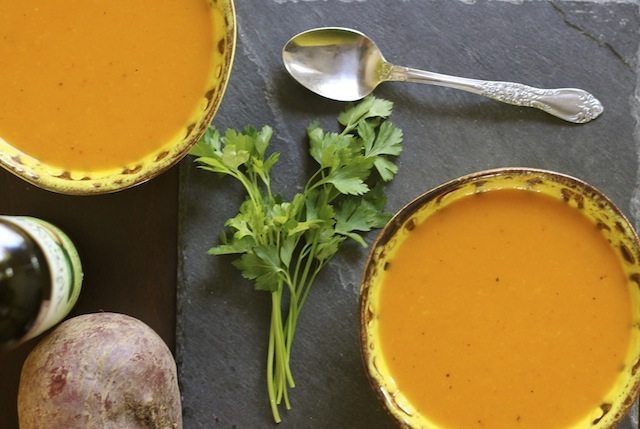
2. Kitchari – This fantastic simple recipe was shared by the author while she was partway through an Ayurvedic cleanse. Kitchari is a traditional Indian Ayurvedic dish that is said to be nourishing and grounding, and it’s a fantastic option during the cold winter months. This dish is full of all six tastes, with astringent mung beans, sweet cinnamon, pungent pepper, salty Himalayan sea salt, sour lemon or lime juice and bitter turmeric. The author has also suggested some great additions to this Ayurvedic recipe, including avocado or roasted vegetables for a bit more substance.
3. Spiced Porridge With Stewed Fruits – Taking the Ayurvedic tradition of a warm breakfast, this delicious, filling porridge will wake your body up and kick start your metabolism for the day. The author suggests drinking warm lemon or ginger water before breakfast – another tradition in Ayurveda – which stimulates digestion. There are some fantastic tips in this recipe blog, including the importance of stewing or cooking fruit for breakfast to avoid upsetting the stomach with raw fruit early in the morning. There are alternative options for this spiced porridge with stewed fruits during both winter and summer months so you can change it according to the seasons and your tastes or doshas!
4. Detox Bowl – This is another take on traditional kitchari, using buckwheat instead of rice, and with a few different ingredients. It is a warming, cleansing meal that is very simple to make, and, because of its balancing properties, it is the perfect ‘comfort food’ during cold seasons, or if you’re feeling a little under the weather. This recipe is tri-doshic, meaning it balances all three doshas and is extremely nourishing and easy to digest. Made with soaked mung beans, toasted buckwheat, hearty vegetables and spices, it is the perfect detox meal that is equally healthy and delicious! The author suggests eating this meal for lunch because, according the Ayurvedic practices, the biggest meal of the day should be eaten when the sun is at its highest point.
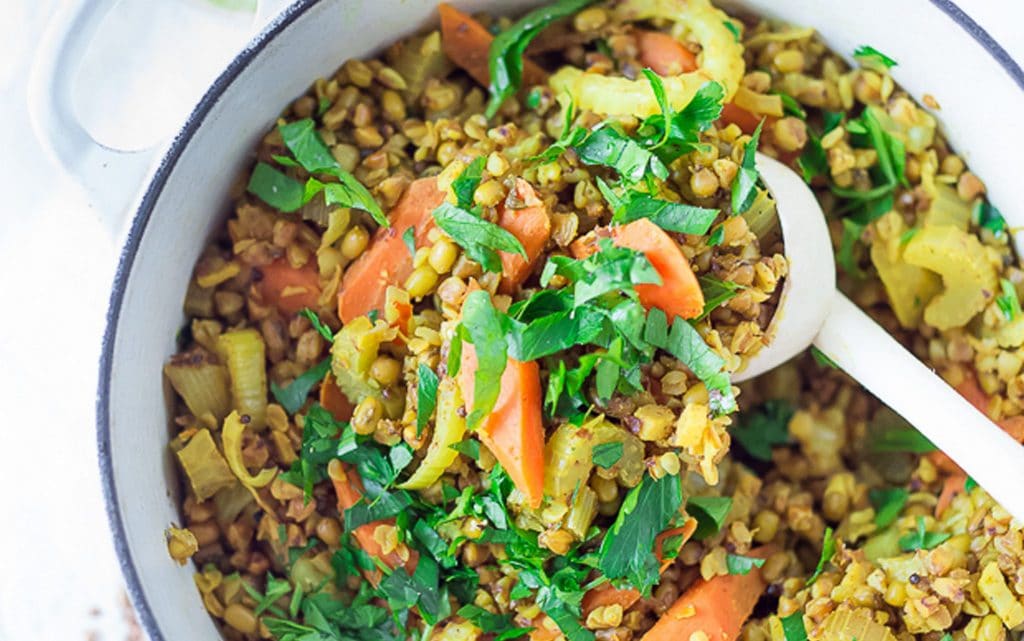
5. Lemon Red Lentil Soup – This is a fantastic, nourishing recipe for bitter cold winter months, or to help you through a cold, cough or flu. The lemony tang along with ginger and spices gives it a really fresh taste that will wake up the senses and clear the sinuses, while the large array of vegetables, packed full of vitamins and minerals, will give you a great health boost. You can basically tell your viruses to back right off with this delicious, nutritious, warming and cleansing soup.
6. Pennywort Pepper Gravy – Using the ‘brain tonic’ of Ayurvedic medicine, this Indian pennywort (brahmi) gravy is rich with strong flavors, spices and aromas, and is the perfect sauce for a rice dish. Pennywort is a herb that was used by great sages of Indian philosophy and is famous for its ability to enhance concentration and memory. If you love Indian flavors then this is the perfect dipping sauce or gravy for you – an absolute feast for the taste buds, with bursts of flavors ranging from curry, sesame and coriander to pepper, mustard and, of course, pennywort.
7. Coconut Burfi – Now for something deliciously sweet and full of coconut-y goodness! This tempting dessert only has three ingredients – fresh coconut, jaggery and cardamom powder – and is so quick and easy to make. Packed full of vitamins and minerals, coconuts are one of the best dessert flavor options out there because of their huge amount of health benefits. In fact, populations that eat a large amount of coconuts are some of the healthiest people in the world. We particularly loved the author’s substitute of jaggery instead of refined white sugar, which is used in the traditional burfi recipe. However, if you can’t find jaggery where you live or don’t eat sugar, you can substitute it with a sweetener of your choice.
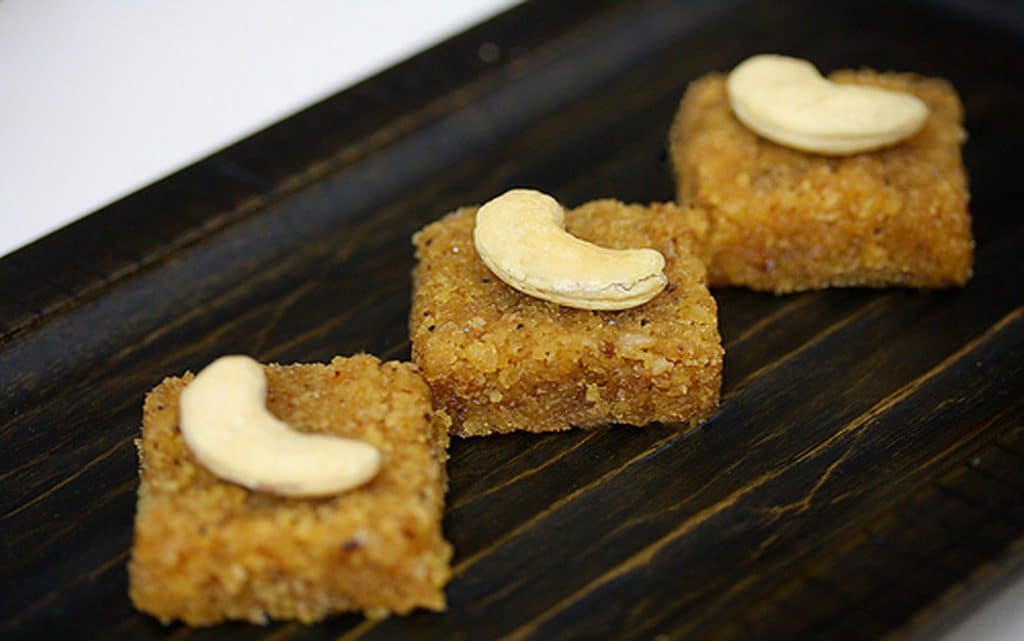
8. Spiced Ayurvedic Sleepytime Milk – This is the perfect Ayurvedic recipe to finish with – great for helping you sleep if you have an active mind. It is soothing, tasty and comforting, with a mixture of cardamom, ginger and turmeric, with the sweet taste of honey – perfect for warming your tummy before bed. Along with this yummy spiced milk recipe, the author offers a number of fantastic Ayurvedic tips to help you sleep soundly through the night, such as rubbing warm sesame oil on the feet.
